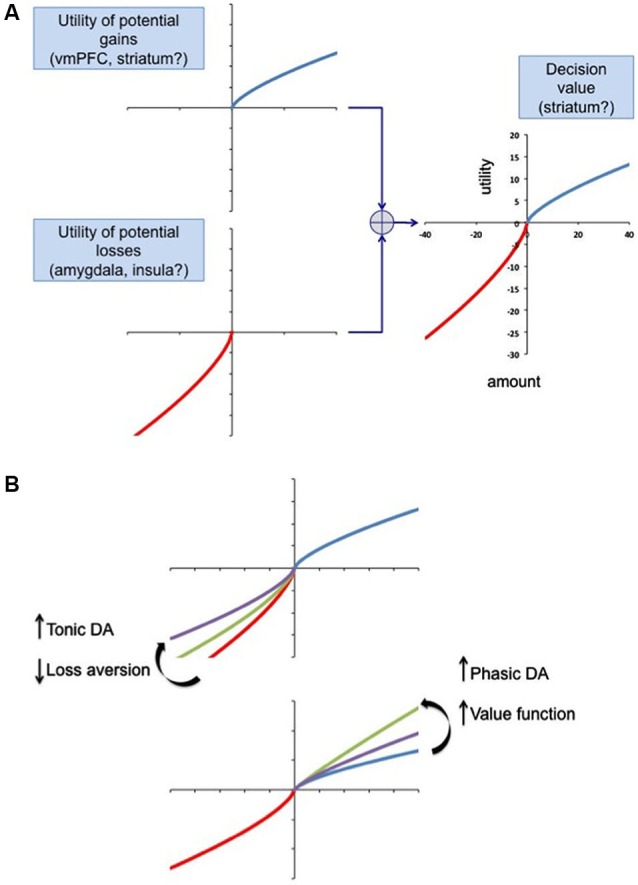Figure 3.

A model of decision-making based on prospect theory. (A) The utility of potential gains and losses is given by the following equation: u(x) = (x)α for potential gains and u(x) = −λ · (−x)β for losses (Kahneman and Tversky, 1979). When the loss aversion parameter λ is greater than 1 the function is steeper in the loss domain, implying loss aversion. In this model the utility of gains and losses is computed by different neural networks and combined at some point. We list regions that may be implicated in the calculation. (B) Dopamine may influence the shape of the utility function for gains and losses, by affecting any of the parameters α, β or λ to regulate the degree of loss aversion. Tonic and phasic dopamine may modulate gain and loss calculation via the direct and indirect basal ganglia pathways (Figure 2). The balance of tonic and phasic dopamine signaling could regulate the balance between action selection and inhibition, regulating the current level of loss aversion.
